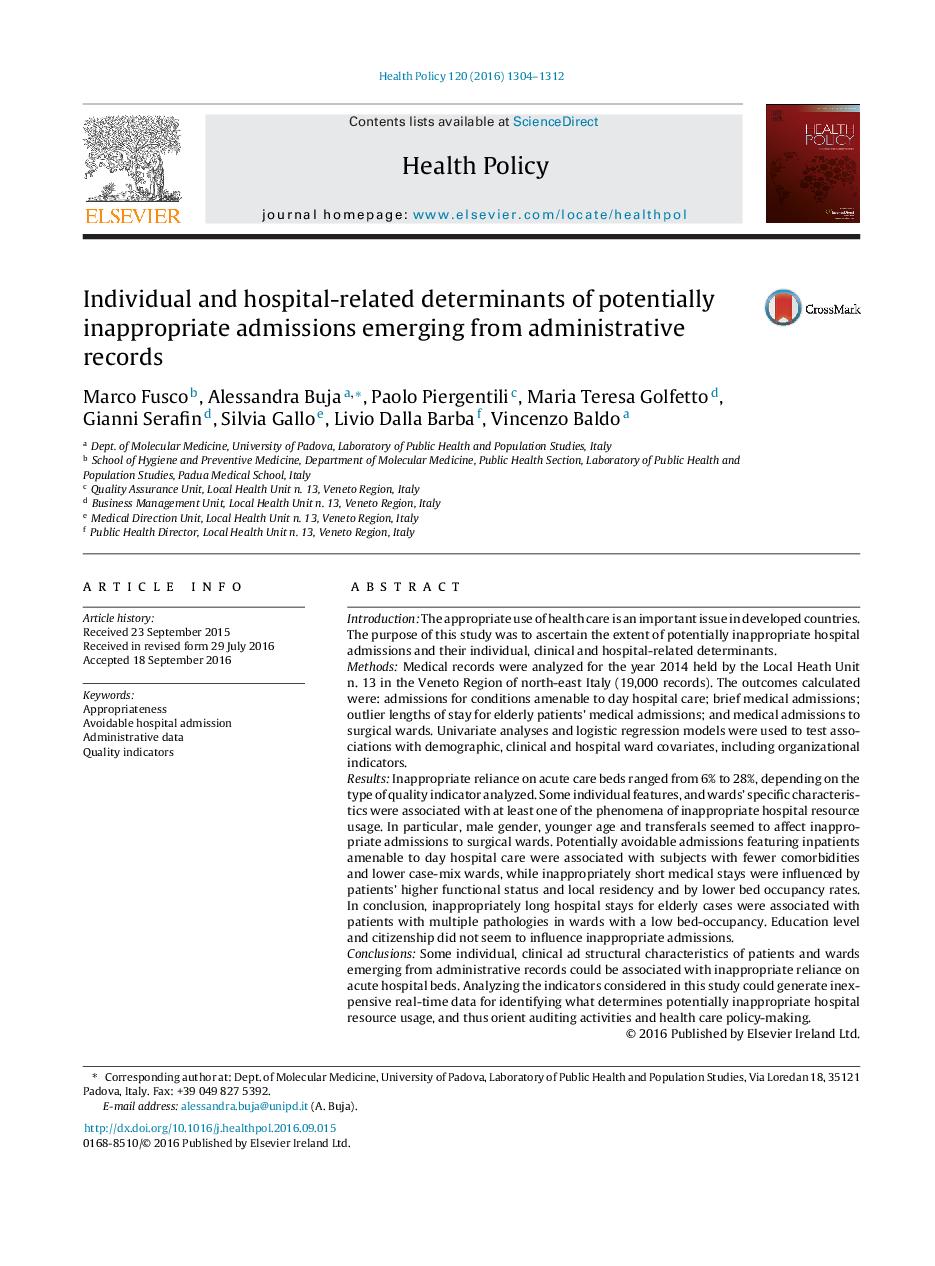| Article ID | Journal | Published Year | Pages | File Type |
|---|---|---|---|---|
| 5723433 | Health Policy | 2016 | 9 Pages |
â¢We examined individual and organizational determinants of potentially avoidable admissions.â¢We used administrative records and specific quality of care indicators.â¢Personal determinants were: age, schooling, Barthel dependency level and comorbidities.â¢Organizational determinants were: wards' complexity and efficiency.
IntroductionThe appropriate use of health care is an important issue in developed countries. The purpose of this study was to ascertain the extent of potentially inappropriate hospital admissions and their individual, clinical and hospital-related determinants.MethodsMedical records were analyzed for the year 2014 held by the Local Heath Unit n. 13 in the Veneto Region of north-east Italy (19,000 records). The outcomes calculated were: admissions for conditions amenable to day hospital care; brief medical admissions; outlier lengths of stay for elderly patients' medical admissions; and medical admissions to surgical wards. Univariate analyses and logistic regression models were used to test associations with demographic, clinical and hospital ward covariates, including organizational indicators.ResultsInappropriate reliance on acute care beds ranged from 6% to 28%, depending on the type of quality indicator analyzed. Some individual features, and wards' specific characteristics were associated with at least one of the phenomena of inappropriate hospital resource usage. In particular, male gender, younger age and transferals seemed to affect inappropriate admissions to surgical wards. Potentially avoidable admissions featuring inpatients amenable to day hospital care were associated with subjects with fewer comorbidities and lower case-mix wards, while inappropriately short medical stays were influenced by patients' higher functional status and local residency and by lower bed occupancy rates. In conclusion, inappropriately long hospital stays for elderly cases were associated with patients with multiple pathologies in wards with a low bed-occupancy. Education level and citizenship did not seem to influence inappropriate admissions.ConclusionsSome individual, clinical ad structural characteristics of patients and wards emerging from administrative records could be associated with inappropriate reliance on acute hospital beds. Analyzing the indicators considered in this study could generate inexpensive real-time data for identifying what determines potentially inappropriate hospital resource usage, and thus orient auditing activities and health care policy-making.
